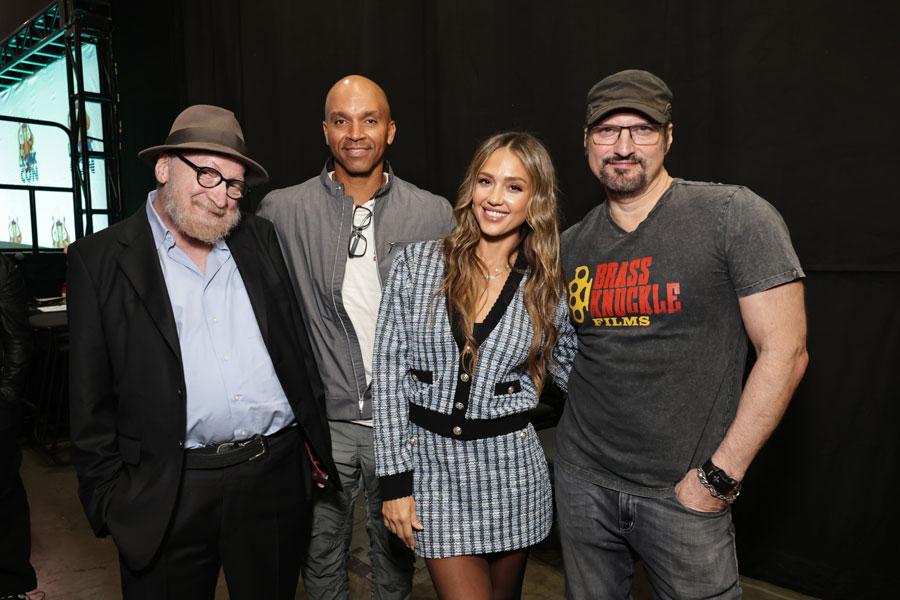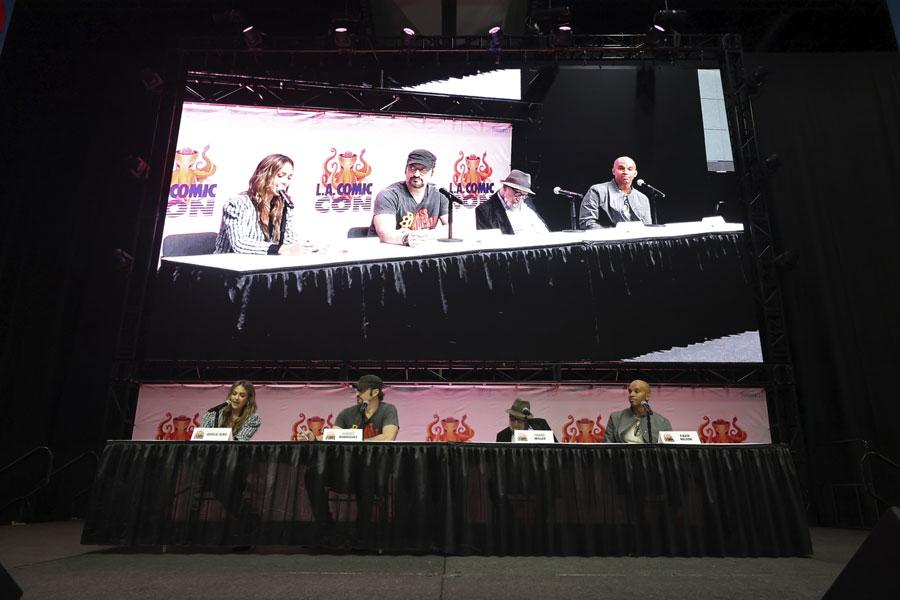
Today at Los Angeles Comic Con, the Lucas Museum of Narrative Art gave fans an early look at the museum and presented a conversation featuring independent filmmaker Robert Rodriguez, legendary comic book artist Frank Miller, and painter, illustrator, and author Kadir Nelson, moderated by actress, producer, entrepreneur, and New York Times bestselling author Jessica Alba. These storytellers came together to share their perspectives on the power of narrative art and the importance of celebrating these popular art forms. The sneak peek of the museum included a video that featured renderings, artworks in the collection, and a pre-recorded interview with the founders.
Co-founded by George Lucas and Mellody Hobson and opening in 2026, the Lucas Museum of Narrative Art will be the world’s first institution dedicated to the exploration of narrative art—or what the founders’ call “the people’s art”—celebrating visual storytelling across eras and cultures, from ancient cave drawings and children’s book illustrations to comic books and digital media.
The panelists shared excitement about the forthcoming museum and what it will mean for comics and magazine illustrations to be recognized and honored in such a major way.
Kadir Nelson, a visual artist and author, whose book The Undefeated won the Caldecott Medal, and whose paintings have graced the covers of The New Yorker, said: “This is art that connects immediately to people and tells their story. They are the building blocks of our imagination. These collective stories, our stories, make up our America. Art is meant to be shared.”
Robert Rodriguez, a director, a producer, a writer, and the all-around creative force behind films like El Mariachi, From Dusk Till Dawn, and the beloved Spy Kids franchise, noted: “When you go into this museum, you will see art piece after art piece. It tells a whole story, and everyone gets a different story from it because that is what it was designed to do. That is art. That is the highest kind of art because it connects us and it speaks to us…This art is our art.”
Frank Miller, a writer and artist whose visionary work on Daredevil, The Dark Knight Returns, and Sin Cityredefined what a comic book can be, shared: “There is a human desire to tell stories. What I think we’re celebrating here, is something that is essentially human, that we don’t share with any other species on earth. We make images and we use them to tell stories. From the simplest coloring book for children, to the comic book, to the cartoon, to the lofty cinema, they are all doing that.”
Jessica Alba, an actress known for her career-defining role in Sin City, shared while moderating the panel: “I’ve always been fascinated by the power of stories. Stories are what hold us together and help us make sense of the world. Whether it’s in a comic book, a movie, a photograph, or a painting, visual storytelling allows us to connect with each other and share our experiences. I love that the Lucas Museum is dedicated to all forms of visual storytelling with an explicit belief that popular art like illustration and comics deserves a temple.

About the Lucas Museum of Narrative Art
Opening in 2026, the Lucas Museum of Narrative Art is a first-of-its-kind institution dedicated to illustrated storytelling across time, cultures, and media. Co-founded by George Lucas and Mellody Hobson, the museum’s collection features works by artists including Norman Rockwell, Kadir Nelson, Jessie Willcox Smith, N. C. Wyeth, Beatrix Potter, Judy Baca, Frida Kahlo, and Maxfield Parrish; as well as comic art legends such as Winsor McCay, Jack Kirby, Frank Frazetta, Alison Bechdel, Chris Ware, and R. Crumb; and photographers Gordon Parks, Henri Cartier-Bresson, and Dorothea Lange. The museum also houses the Lucas Archive, containing models, props, concept art, and costumes from Lucas’s filmmaking career.
Designed by Ma Yansong of MAD with a landscape by Mia Lehrer of Studio-MLA and Stantec as executive architect, the museum will be located in Exposition Park, Los Angeles, on an 11- acre campus that includes new green space and a 300,000-square-foot building with galleries, two theaters, a library, restaurant, café, retail store, and community spaces.

